Mozart’s moves: ‘Figaro’ as a game of chess
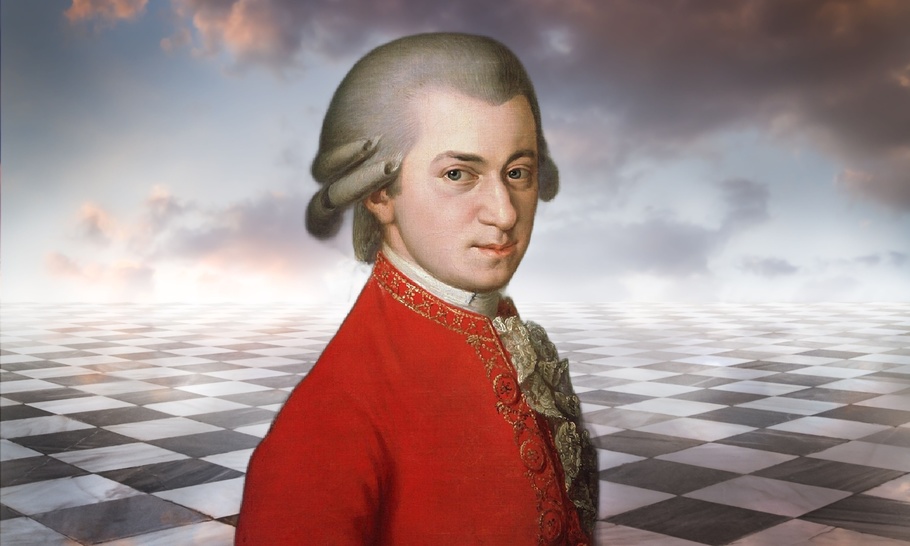
Having completed my annual pilgrimage to Glyndebourne for their new version of Le Nozze di Figaro, I finally realised what this particular opera by Mozart is all about. Figaro initially expresses his rivalry with Count Almaviva in terms of a dance:
“Se vuol ballare, signor contino, il chitarrino le suonerò…” (Act I, Scene II)
But the plot is actually a game of chess, where move is followed in turn by countermove, and the players are Count Almaviva and Figaro himself. Achieving Checkmate for the former resides in reviving his feudal rights and seducing Susanna before she marries Figaro. Victory for Figaro occurs, when he reaches the safe haven of marriage to Susanna, as Virgo Intacta and thus rescues her from the evil clutches of the lascivious count.
In the course of the game, each player treats the cast of secondary characters as pieces in their armoury. The Count enlists Marcellina, Bartolo, Basilio, Don Curzio and Antonio, while Figaro relies on Susanna, the Countess, Cherubino, Barbarina and the chorus of peasants for his supporting cast of living chess pieces.
An archetypal segment of the game occurs in the Countess’s private rooms. The Count is convinced that he has trapped the priapic Cherubino in his wife’s closet, Susanna counters by insinuating herself into the threatened space. Cherubino escapes by jumping from the Countess’s window. This subterfuge is undermined by Antonio the inebriated gardener, who has inconveniently witnessed the page’s escape. Figaro blocks this thrust by claiming that it was he who jumped. The Count produces Cherubino’s papers, as evidence that it was Cherubino, but Figaro parries with the revelation that Cherubino’s military commission is unstamped, and that Cherubino had asked him to rectify this omission …and so on.
Move, countermove, thrust and parry.
Mozart (1756-1791) and the great chess master and composer of operas, Philidor (1726-1795) were contemporaries. Those pre-revolutionary years were also the days of living chess on the lawns of Versailles. Pierre-Augustin Caron de Beaumarchais (1732 – 1799) was a French dramatist, active during the Age of Enlightenment and a contemporary of both Philidor and Mozart. Best known for his Figaro plays, the bases for Le Nozze di Figaro and Rossini’s Il Barbiere di Siviglia, at various times in his life the versatile Beaumarchais also tried his hand at being a diplomat, watchmaker, inventor, musician, spy, publisher, arms dealer, and revolutionary, in both the French and American revolutions. Beaumarchais is buried in Paris, while Philidor is interred in London and Mozart in Vienna.
This week’s game was a living reconstruction in Trafalgar Square on Sunday July 13 of a victory by the well-known chess collector Jon Crumiller. The chess festival which took over Trafalgar Square was orchestrated by the indefatigable Malcolm Pein, doubtless basking in the glory of a renewed grant of £1.5 million from Rachel Reeves to support the most promising talents in British chess.
Crumiller vs. Brazwell
Originally played in a 2023 simultaneous display by Jon Crumiller
re-enacted in Trafalgar Square with living pieces, 13th July 2025
- e4 c6 2. d4 d5 3. exd5 cxd5 4. c4 Nf6 5. Nc3 g6 It was the 1961 game Walther – Petrosianwhich inspired me to take up …g6 against the Panov – Botvinnik attack. Five years later came the first game (Spassky – Petrosian) to throw doubt on the …g6 line.
- cxd5
- Nf3? was met with very short shrift in my 1963 game, Pelling-Keene.
6… Bg7 7. Bc4
In 1964, against 7. cxd5, I was able to hold the draw in, Nicevski – Keene.
7… O-O 8. Nge2
And again, I was successful against 8. Nf3 in the 1965 game, Korom-Keene.
8… Nbd7 9. Bb3 Nb6 10. Nf4 Qd6 TN
With the wishful intention of activating his king’s rook, when it was more critical to develop his other, after 10… Bf5, a5 or even …Bg4. However, innovation for Black proved necessary due to a theoretical reversal in the alternative …exd6, to Petrosian’s arduous 1966 …Rxd6 defence (see above) for example, in Tal – Botvinnik later that same year.
- O-O Rd8 12. Re1 Bf5 13. f3?
Having developed an advantage over the last few moves, the text carelessly concedes much of this. More progressive are, 13. h3 or a4.
13… h5 14. Re5 Rac8 15. Qe2
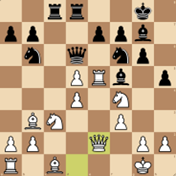
15…Re8?
With this blunder, Black gifts his opponent an advantage while missing an opportunity to liquidate to an unlikely, unstable yet equalised position after, 15… Nfd7 16. g4 hxg4 17. fxg4 Nxe5 18. gxf5 Nec4 19. fxg6 Bxd4+ 20. Kg2 Qe5 21. Qg4 Rd6 22. Bc1 Qg7!
- Nb5 Qb8 17. Bd2?!
A weak move that cedes ground to Black. White does better with 17. Be3 a6 18. Nc3 Qd6 19. Re1 Nbd7 20. Rxf5 gxf5 21. Qd3 Nb6 22. Qxf5 Nc4 23. Bxc4 Rxc4 24. Kh1, and the threat of play along the g-file ensures that White has more than sufficient compensation for the exchange.
17… a6?!
Better is 17… Bc2.
- Nc3 Qd6?!
Less weakening is 18… Nbd7.
- Re1 Rc7?
Both 19… Qb4 and …Nbd7 are more resilient, despite Black remaining worse in both cases. The text move is an error that delivers White possibly winning chances.
- h3 Nh7?
The further and significant error places Black in dire jeopardy.
- g4!?
Even stronger is 21. Nxh5!
21… hxg4 22. hxg4 Bc8 23. Ne4 Qd8 24. d6 Bxe5 25. dxe5 exd6 26. exd6 Rd7??
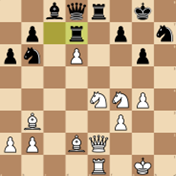
This grave inaccuracy puts paid to any remaining hope. Comparatively better is 26… Rc6.
- Bc3 Rxe4?
Black continues to find ways to make an already lost position even worse.
- Qxe4 Rxd6 29. Qe5 Nf6 30. Qg5 Nfd5??
With a machine mate in nine.
- Nxd5 Nxd5
And not, 31… Qxg5 32. Re8+ Kh7 33. Rh8#.
- Bxd5 Rxd5
With the same tactic being available: 32… Qxg5 33. Re8+ Kh7 34. Rh8#.
- Qxd5 Qxd5 34. Re8+ Kh7 35. Rh8#
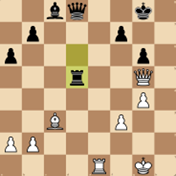
Jon Crumiller had already developed some experience with the Re5 sacrifice theme in this game played a few years beforehand. In this case I was giving the simultaneous display.
Jon Crumiller vs. Ray Keene
3-board simul, 2017.08.15
- e4 c5 2. c3 g6 3. d4 cxd4 4. Bc4 Bg7 5. cxd4 d5 6. exd5 Nf6 7. Nc3 O-O 8. Nge2 Nbd7
A Sicilian defence transposes to a Caro-Kann.
- Bb3 Nb6 10. Nf4 Bf5 11. O-O h6 12. Re1 Kh8 13. Re5 Ng4
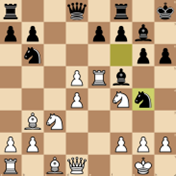
- Qe2?!
White has more effective progressions, such as: 14. Rxf5 gxf5 15. Qf3 Nf6 16. Nd3 a5 17. a4 Nc8 18. Qxf5 Nd6 19. Qf3 Qb6 20. Nc5, with a strong initiative.
14… Nc8
If Black intends accepting the exchange on e5, there is no need to wait: 14… Nxe5 15. dxe5 Qb8 16. g4 Bxe5 17. Nh3 Bd7 18. Bxh6 f6 19. Qe4 Rf7 20. Nf4 Bxf4 21. Bxf4 Qf8, is feasible.
- Bd2 Nxe5
I decided to accept and try to hang on.
- dxe5 g5?!
A less loosening defence follows, 16… a5 17. g4 Bd7 18. h4 Kg8, when Black has limited any further advantage beyond the tangible edge White already exhibits.
- Nh5 Bg6 18. Nxg7 Kxg7 19. h4 f6?
Black damages his kingside defences further with this move. It concedes more tactically than either, 19… a5 or …Nb6.
- Re1 a5
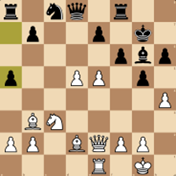
- hxg5?!
A more assertive progression follows: 21. d6! when Black only has, at best:-
- a) 21… Nxd6 22. exd6 Qxd6 23. Nb5 Qd7 24. Qxe7+ Qxe7 25. Rxe7+ Kh8 26. Bc3 a4 27. Bd5 Rad8 28. Nc7; or,
- b) 21… exd6 22. exf6+ Qxf6 23. Nd5 Qxf2+ 24. Qxf2 Rxf2 25. Kxf2 a4 26. Bd1; or,
- c) 21… Re8 22. d7 Qxd7 23. Ba4 Qd3 24. Qxd3 Bxd3 25. Bxe8 Nb6 26. Bh5 Rd8 27. Bc1;
In every case White would enjoy a near-decisive advantage.
21… hxg5 22. Qe3?
White blunders with the text, yet so great is his advantage, that although now diminished, it remains one of concern. Best was, 22. Nb5 a4 23. Nd4 axb3 24. Ne6+ Kh6 25. Nxd8 Rxd8 26. a3 Rxd5 27. exf6 exf6 28. Bc3, when White has good winning chances.
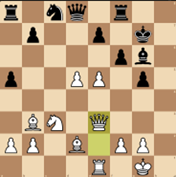
22… Qb6 23. d6 Qxe3 24. Bxe3
Stronger is, 24. Rxe3 exd6 25. exf6+ Rxf6 26. Nd5
24… fxe5
White’s threats are alarming but Black is hanging on.
- d7 Nd6 26. Bxg5?!
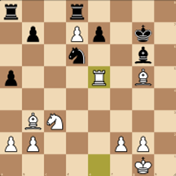
Another serious inaccuracy. Correct is, 26. Bb6 e4 27. g4 Rfd8 28. Ba4 Kf7 29. Rd1 Bh7 30. Nd5 Bg8 31. b3 Rab8 32. Rc1, when White’s passed d-pawn and active pieces maintain his momentum and are more than enough compensation for the exchange.
26… Rfd8 27. Rxe5?!
White forgoes about the last of any initiative once enjoyed, with the latest error. Necessary is 27. Na4 Nf7 28. Bxe7 Rxd7 29. Nb6 Rxe7 30. Nxa8 b5 31. Rc1 Bd3 32. Nc7 a4 33. Bd5 Bc4 34. Ne6+, with a slight, though still tangible, advantage. This latest and last mistake ensures Black a level game with neither player able to demonstrate much real advantage.
27… Rxd7 28. Bxe7 Re8 29. Bxd6 Rxd6 30. Rxa5 Rd2 31. Rb5 Rxb2 32. Rxb7+ Kh6 33. f4 Re3 34. Rc7 Be4 35. Nxe4 Rxe4 36. f5 Ree2 37. Bd5 Re5 38. Be6 Ree2 39. Bd5 Re5 Game drawn ½-½
Ray’s 206th book, “ Chess in the Year of the King ”, written in collaboration with Adam Black, and his 207th, “ Napoleon and Goethe: The Touchstone of Genius ” (which discusses their relationship with chess) can be ordered from both Amazon and Blackwells. His 208th, the world record for chess books, written jointly with chess playing artist Barry Martin, Chess through the Looking Glass , is now also available from Amazon.
A Message from TheArticle
We are the only publication that’s committed to covering every angle. We have an important contribution to make, one that’s needed now more than ever, and we need your help to continue publishing throughout these hard economic times. So please, make a donation.





